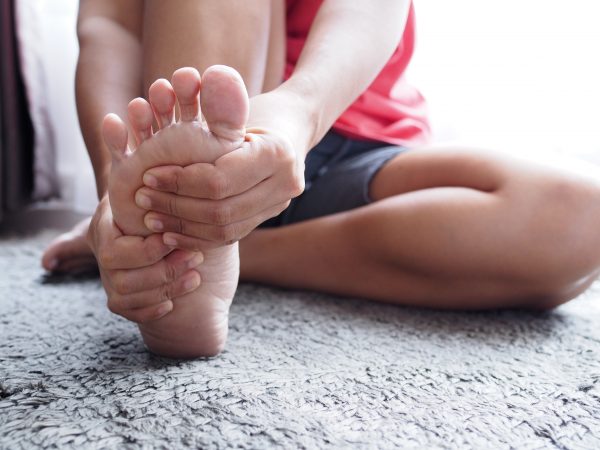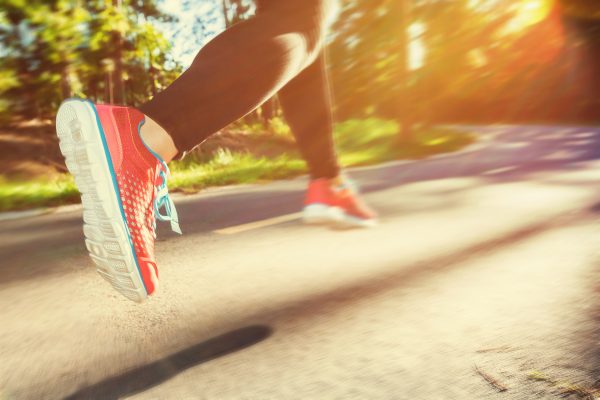Running provides physical and mental health benefits for those who practice it regularly. Unfortunately, running can also result in some problematic foot-related health conditions— commonly, pain in the arch of your foot.

If you’re a runner who enjoys hitting the trail or open road but has experienced the arching or stabbing that sometimes accompanies your favorite pastime, check out these five common causes of arch pain before it stops you in your tracks:
1.) Structural Problems
Structural issues like high arches or flat feet are often an underlying problem that can aggravate or cause arch pain. These may be conditions you were born with or experience due to injury.
The following can make these structural conditions even more painful:
- Overusing your feet, through excessive exercise.
- Recently gaining weight.
- Getting older, the tendons and ligaments don’t bounce back as easily with increased age.
- Certain neurological conditions.
- Physical stress.
Many structural problems can be helped with custom orthotics when running, specially designed for your structural needs. In severe cases, a podiatrist may recommend an adjusted workout routine to prevent further pain, such as lower impact activities instead of running.
2.) Plantar Fasciitis
The most common reason for arch pain or foot pain after running is plantar fasciitis. The plantar fascia is the ligament that connects the heel to the front of your foot. If you have this condition, you may note stiffness or pain in the arch and heel area. You might also experience intense, stabbing pain around your heel. It is usually the result of either an injury to the plantar fascia or the foot being overused, which results in excessive inflammation.

Pain can increase right after a run or be prevalent when you first wake up in the morning. Certain stretches can help you counteract your plantar fasciitis, as can supportive shoes.
3.) Posterior Tibial Tendon Dysfunction (PTTD)
The tendon of the posterior tibial connects the muscle of your inner foot to your calf. An injury to this area can cause inflammation and result in posterior tibial tendon dysfunction (PTTD), also known as adult-acquired flatfoot.
PTTD arch pain will move up the back of the calf and include the ankle’s innermost region, in many cases. You might even experience some ankle swelling. Although PTTD is associated with running, it doesn’t always happen right after you exercise; sometimes, PTTD can occur in the middle of a run. To treat this, you can get a shoe insert or ankle brace. In some severe cases, surgery may be necessary.
4.) Cavus Foot (High-Arched Feet)
“Cavus foot” is a term for those with a high arch caused by neurological conditions like a stroke, cerebral palsy, or Charcot-Marie-Tooth disease. It can also be a simple structural abnormality.
It causes foot instability, which can result in loss of balance. This condition is often best treated via shoe inserts or by wearing shoes that have additional ankle support when running.
5.) Overpronation or Misaligned Feet
The foot is designed to move a certain way when running, walking, or even standing. If you have overpronation, this means the outer edge of your heel strikes the ground first, followed by the foot, which rolls inward towards your arch. Overpronation causes your foot to flatten. Over time, this will lead to pain in the arch area of your foot, especially when participating in an activity like running.

One clue you may have this condition is found on the underside of your favorite running/walking shoes. Look at the soles of your shoe, if you see the inside, bottom part of the shoe is more worn than other areas, it could indicate that you have this condition. Inserts or stability shoes can help to correct this issue.
When it’s Necessary to Seek Professional Treatment
The arch of your foot stretches from your heel to the base of your toes. This important part of your foot does the following pertinent jobs:
- Helps adapt to changes in the terrain on which you are running.
- Helps stabilize the foot and movement.
- Bears your body weight during running.
- Absorbs the shock of your stride, taking the full force away from your joints and legs.
- Helps you to balance when running or doing other activities.
Occasional arch or bottom of foot pain after running is probably not enough to merit a visit to a podiatrist. When base-of-foot pain after running is sporadic, you can likely self-treat at home by resting your feet or soaking them. However, if your arch pain is interfering with your love of running, sidelining you from your favorite sport, and changing the way you live life, visit us at Foot & Ankle Group as soon as possible.
Call us today to set up an appointment.
Categorized in: Blog
Comments are closed